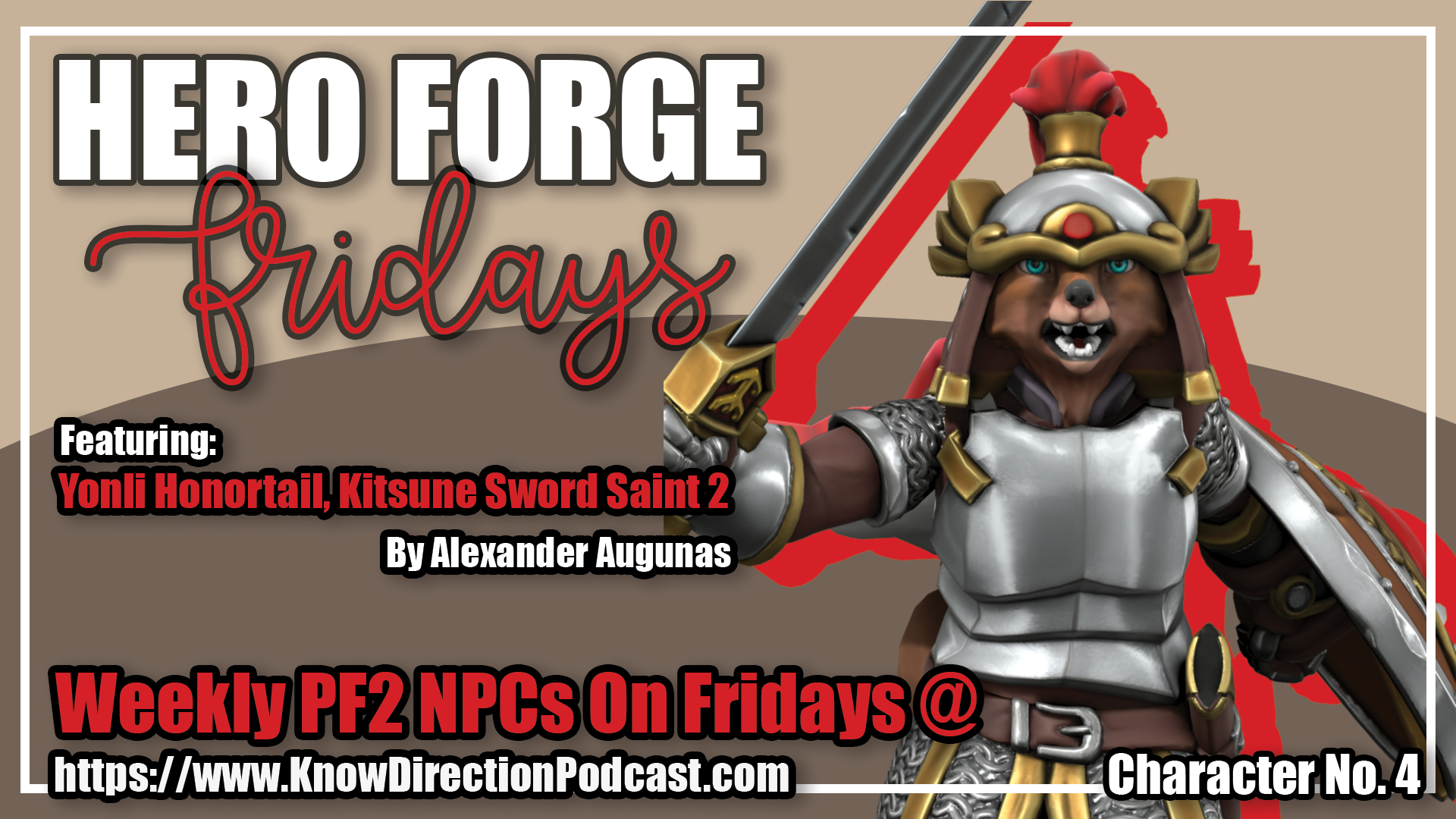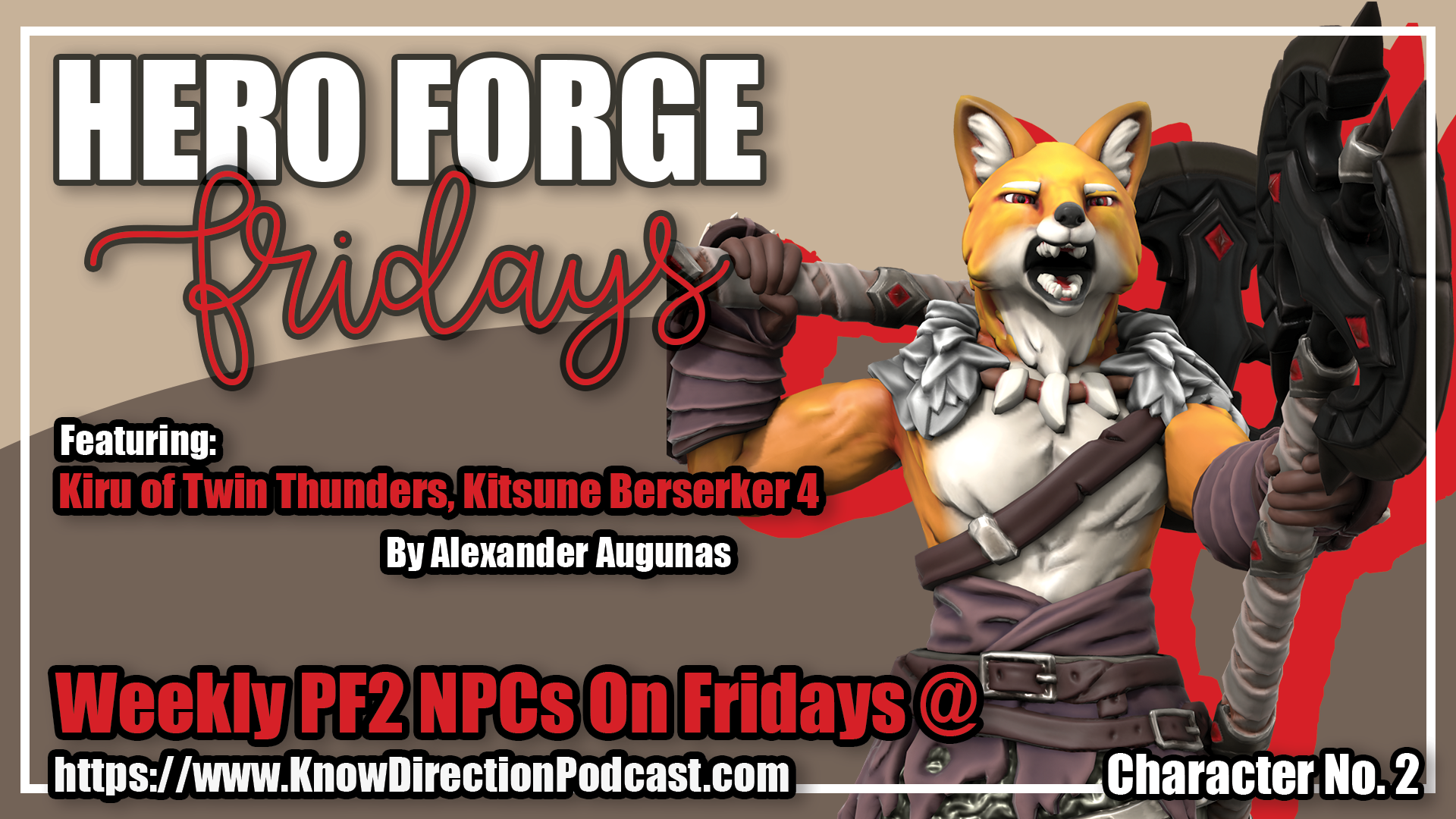Welcome to Iconic Design, where we discuss the creation of exciting new character builds for the Pathfinder Roleplaying Game!
Welcome to our second Harrow themed Iconic Design for Harrow Month! Today I have something a little bit different for you: a halfling witch who specializes in both healing and debuffing. Caught your interest? Let’s get on to it, then!
Build Concept
Here’s a quick run-down of what we’re going to be working with.
- Halflings of Golarion: You’re going to need this product by Paizo Publishing in order to use this build. Halflings of Golarion includes the halfling jinx racial trait, which we’ll be using in our build. It also contains the Malicious Eye feat, which we’ll be using.
- Witch (Cartomancer): This witch archetype out of the Harrow Handbook allows you to deliver touch spells with harrow cards. It is an awesome archetype that doesn’t alter much, making it great for our purposes.
- Witch (Hedge Witch): This healing-focused archetype is going to allow our build to cover both the party healer role and the combat debuffer role very effectively.
Early Levels (1–7)
- Classes: Witch (Cartomancer, Hedge Witch) 7
- Feats: Point-Blank Shot (1st), Deadly Dealer (Bonus), Precise Shot (3rd), Malicious Eye (5th), Far Shot (7th)
- Abilities: Deadly Dealer, Hexes (Cackle, Evil Eye), Patron (Healing), Spell Deck
One of the nice things about this build is that it functions right from level 4. Basically, we’re tossing around cards to heal people. The reason this works is the ever-so-lovely spell deck ability granted by the cartomancer archetype. At 3rd level, the spell deck gains the ability to “deliver touch spells” for the witch, which allows the witch to effectively make ranged touch attacks with her melee touch spells. And it just so happens that every single cure wounds spell in the game is a touch spell. Luckily for us, the cartomancer archetype stacks with the hedge witch archetype, and at level 4 the hedge witch gives us spontaneous healing, which allows the witch to spontaneously cast all cure wounds spells similar to a cleric, even if the spell isn’t stored within her spell deck.
For spells she might want to prepare, inflict wounds is an excellent choice, as she can deliver inflict wounds spells as a ranged touch attack just as she can with cure spells. For her hexes, the witch is taking evil eye (1st) and cackle (6th). Evil eye is an awesome hex, and cackle only makes it better. Plus as a halfling with the halfling jinx trait, the Malicious Eye feat improves the penalties for saving throws by –1, making your party’s attacks even more devastating against it. So yes, your healer is going to be cackling with glee as she saves your lives.
Mid Levels (8 –14)
- Classes: Witch (Cartomancer, Hedge Witch) 14
- Feats: Point-Blank Shot (1st), Deadly Dealer (Bonus), Precise Shot (3rd), Malicious Eye (5th), Far Shot (7th), Extra Hex (9th), Split Hex (11th), Accursed Hex (13th)
- Abilities: Deadly Dealer, Empathic Healing, Hexes (Cackle, Evil Eye, Misfortune), Major Hexes (Agony, Harrowing Curse, Witch’s Charge), Patron (Healing), Spell Deck
The mid level range is a great time to play our halfling buddy. Having to give up three hexes for his archetypes is rough, so I gave him Extra Hex at 9th level to pick up misfortune, another awesome debuffing hex. At 10th level, grabbing harrowing curse, from the Harrow Handbook, is a no-brainer because of its built-in synergy with the spell deck. 12th level brings on Witch’s Charge, which is a nice alternative to chucking cards at one specific target to heal them, and 14th level rounds out the selection with the crippling agony hex.
Looking at the feats, Split Hex is insanely powerful. You’re crazy not to take this one. Split Hex allows you to target two creatures with one of your hexes (not major or grand hexes; just regular hexes). This means that you can roll out misfortune or evil eye on two targets at once. Accursed Hex makes both agony and misfortune a little less likely to fail spectacularly, because you can try again once with each of those hexes should you fail to affect your target the first time.
So far, the build is doing very well at its debuffing and healing, especially thanks to the healing patron, which adds just about every non-cure wounds spell that you could want to the witch’s spell deck. Just about the only great one that she doesn’t get is breath of life, but I suppose we wouldn’t need the cleric if this build could do EVERYTHING better than a divine servant, huh?
Endgame (15+)
- Classes: Witch (Cartomancer, Hedge Witch) 20
- Feats: Point-Blank Shot (1st), Deadly Dealer (Bonus), Precise Shot (3rd), Malicious Eye (5th), Far Shot (7th), Extra Hex (9th), Split Hex (11th), Accursed Hex (13th), Sluggish Jinx (15th), Extra Hex (17th), Split Major Hex (19th)
- Abilities: Deadly Dealer, Empathic Healing, Grand Hexes (Dire Prophecy, Life Giver), Hexes (Cackle, Evil Eye, Fortune, Misfortune, Soothsayer), Major Hexes (Agony, Harrowing Curse, Witch’s Charge), Patron (Healing), Spell Deck
Time for the end game! After acquiring a good arsenal of debuffing hexes, it is time for the witch to grab the soothsayer hex at 16th level. This hex, which comes from the Harrow Handbook, allows the witch to delay the onset of her misfortune, agony, or evil eye hex for up to 1 day, which can make for a very sneaky surprise in a setting where she gains the opportunity to prepare herself. At 18th level, the witch finally gains the ability to use grand hexes. For our witch’s grand hexes, I’ve chosen dire prophecy, which is another nasty debuffing hex, and life giver, which allows the witch to return a fallen ally back to life.
For feats, I’ve selected Sluggish Jinx, Extra Hex, and Split Major Hex. Split Major Hex is exactly what it sounds like and should excite the heck out of you. Sluggish Jinx allows our halfling witch to jinx her opponent’s attack rolls and initiative checks, which means that she can also apply this penalty to attack rolls and initiative checks when she uses the evil eye hex. Comboed with Soothsayer, our halfling can spring penalties on just about anyone she doesn’t trust. Finally, I selected Fortune with our Extra Hex for the extra rerolls. You can also use this hex in advanced via soothsayer, which gives you some prebuff potential. I’m sure by 17th level, your friends are screaming at you for not taking this hex sooner. Or maybe they’re not; the penalties you’re inflicting are pretty nasty, plus you’re healing them.
If you think this stage of the game has too many debuffs, I would recommend swapping dire prophecy for the death curse hex. Auto-killing someone is pretty nice for the party healer, wouldn’t you say?
Mythic
I think I would be more interested in using this build in a mythic game than anywhere else. Mythic rules allow you to cancel out the witch’s limited spell slots with mythic power, after all. I would grab the archmage path and take mythic hexes, which makes your debuffs even nastier. I would also take arcane potency and gobble up all of those extra spell slots. Finally, I would take the mythic powers that allow you to quickly and rapidly prepare spells. I might also grab a few of my favorite spells via mythic spellcasting, but that’s optional. (Though if you can take some mythic cure wounds spells, you totally should).
And there you have it; a halfling witch who builds allies up and knocks foes down with crippling debuffs. What do you think? Is this a build that you would use, or is it too scattered? Do you like playing the healer, or are you in the “replace the PC with a wand of cure light wounds” camp? Leave your answers and comments below and come back again next week for another Iconic Design!
Alexander “Alex” Augunas has been playing roleplaying games since 2007, which isn’t nearly as long over 90% of his colleagues. Affectionately called a “budding game designer” by his partner at Radiance House, Alexander is the author of the Pact Magic Unbound series (Radiance House) and a handful of other Third-Party Products. Before founding the Everyman Gaming blog, Alexander gained notoriety for writing the GM’s Guide to Challenging Encounters, which remains accessible to this day. His favorite color is blue, his favorite Pathfinder Race/Class combination is kitsune witch, and his favorite witchy movie is Hocus Pocus.





I would absolutely use this! This sounds like a total blast to play in game! You keep adding characters I want to play to my already long list of characters. I’m sitting on roughly 15 fully fleshed out character builds I’m itching to try and and I know I’ll never get to unless I go through a particularly bloody campaign 🙁
Looks like a fun build, even if I’m in the wand camp. Witch is the one full caster class that I love to play (too many years as a GM does that to people), and this build should tick all the boxes with my current GM as well. Let the clerics and oracles play their cowboys and indians game, I’ll play this kind of a “healer” any day.
There’s a recent thread on Paizo about the spell Hex Vulnerability and how it is better in wand form than Cure Light Wounds. It makes a healing witch a lot easier to pull off: http://paizo.com/threads/rzs2ru2q?Forget-Wands-of-CLW-Wands-of-Hex
I saw that thread! Its pretty stellar.
Hopefully, it doesn’t go the way of spell-like abilities and prerequisites. : /